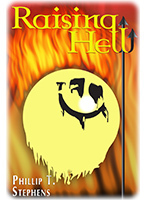How to make writing in first-person easier
The most important thing I keep in mind when writing First Person Point of View is that the narrator’s point of view is truly limited. They cannot report what they cannot see or hear. Therefore, I have to be conscious of how they receive the information they report. I once put a (jealous) narrator’s ear to the wall so he could learn what his girlfriend said in another room.
[image error] A first person narrator learns new facts about her lover. (PixHere)
The worst vehicle for conveying information to the reader is a long passage of dialogue from another character explaining events to the narrator. Keep third-hand revelations as brief as possible.
“Jenny’s been seeing Bob.”
“You saw them together?”
“Sally did.”
That’s all you need. And remember, the information being relayed can be just as unreliable as your narrator’s information.
This is why I love to write in the first person. How can I convey to my reader that the narrator isn’t trustworthy (some readers know this before they pick up the book, others are more naive) and convey the real events to them?
Jean Cogdell shares some tips of her own for writing in the first person.
How to make writing in first-person easier
Book Reviews
Follow my writing on Medium
[contact-form]
Wind Eggs
As much as I admire Plato I think the wind eggs exploded in his face and that art and literature have more to tell us, because of their emotional content, than the dry desert winds of philosophy alone. ...more
- Phillip T. Stephens's profile
- 30 followers






